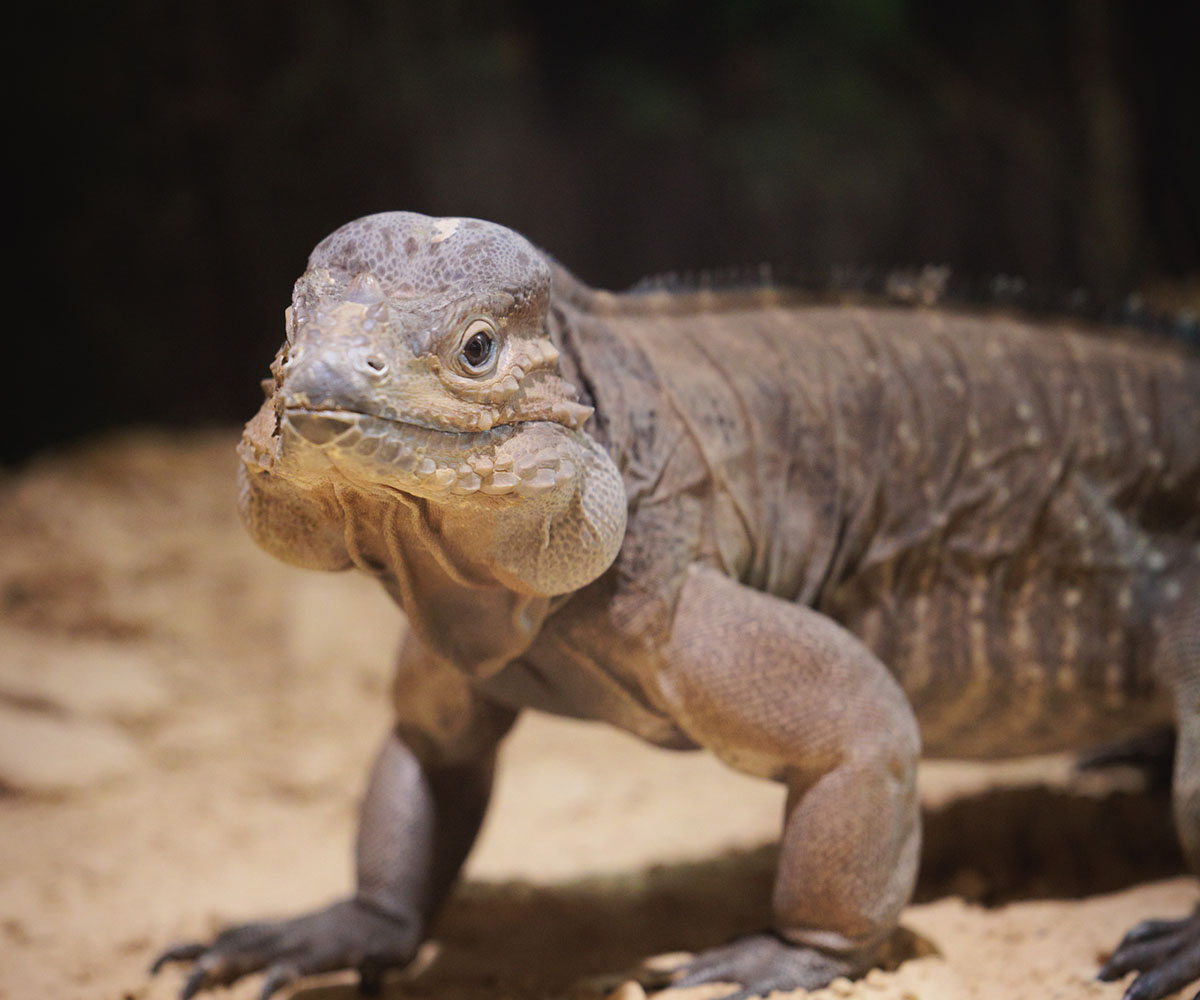Learn about the Rhinoceros Iguana
Scientific name: Cyclura cornuta
Conservation status: Endangered - 10,000-17,000 rhino iguanas left in the wild and declining.
Environmental Threats: Habitat destruction – agriculture & urbanisation. Poaching and predation by feral animals. Climate Change.
Lifespan: Wild = 15 to 17 years. Captivity = up to 40 years.
Reproduction: 2 to 34 eggs in clutch. 85 days incubation.
Care for Young: Females guard the eggs after laying them. Hatchlings are fully self-sufficient.
Size: 60cm to 136cm long
Weight: 4.5kg – 9kg
What do Rhinoceros Iguanas eat?
Rhinoceros Iguanas are omnivores – they eat leaves, flowers, seeds, berries, and fruits from different plant species. Known to eat small mammals, carrion, and insects.
Follow the sun
The Rhinoceros Iguana is large-bodied and heavy-headed, a vertically flattened tail, and a crest of pointed horned scales extends from the nape of their neck to the tip of their tail. They rely on external heat sources to keep themselves warm [ectothermic]. These iguanas will move through the daylight hours following the sun to soak up optimal rays into their core.
Eco-engineers
The Rhinoceros Iguana is the largest lizard on their island home, and they don’t just spend their days sitting pretty at the top of the lizard hierarchy, they have an important job of seed dispersal. These scaly eco-engineers help to shape the landscape and maintain balance across biodiversity.
Rock on
Rhinoceros Iguana prefer a life with very little rain and a few trees or shrubs. True to their nick name “rock” iguana, they favour rather barren landscapes with smooth, large boulder formations and rocky outcrops for basking on. Adequate crevices and sheltered areas for retreating into are critical to escape into and crevasses to hide among away from predators such as humans, birds of prey, feral dogs, and cats.
Ch-ch-ch-changes
The Rhinoceros Iguana – like other iguana species – has been known to exhibit phenotypic plasticity. Phenotypic plasticity refers to some of the changes in an organism's behaviour, morphology, and physiology in response to varying environmental conditions. Being able to alter thermoregulation through phenotypic plasticity provides hope that these iguanas may respond to a warming planet and extreme climate by adjusting their basking behaviour to suit and to compensate for warmer environmental temperatures.
Nodding Hill
Rhinoceros Iguanas, as with many lizard species, do “head-bobbing”. This nod-like action is a commonly observed form of communication between animals in overlapping territories. Males, especially, appear to “nod” their heads toward one another as an assertion of dominance, or announcing their “ownership” of an area. It can also be a warning to not come any closer. Males will use their “nodding” to communicate the want to mate with a female. Female iguanas also “nod” at each other to compete for nesting sites, this combat can become fierce.
